“I was promised cherry blossoms if I came to Tokyo,” joked Professor Peter Feaver on a chilly March Friday to a room full of alumni and two dozen traveling Duke students who had just spent a week in Japan filled with immersive learning. The students returned to Duke before the flowers bloomed, but their mission was focused on the searing experience of the Pacific Theater in World War II.
They were part of the Program in American Grand Strategy, an initiative aimed at preparing the next generation of national security strategists. One of the ways the program teaches strategy is through a staff ride, where students research a leading strategist from a previous generation and present an autobiographical account of that historical figure and their decisions. For this year’s staff ride, the program focused on the end of WWII by exploring Okinawa, Hiroshima and Tokyo.

“By traveling the terrain and by interacting with each other from historical perspectives, we can understand the choices that were made with greater empathy,” Feaver said. “We might still judge those choices, but we understand them better.”
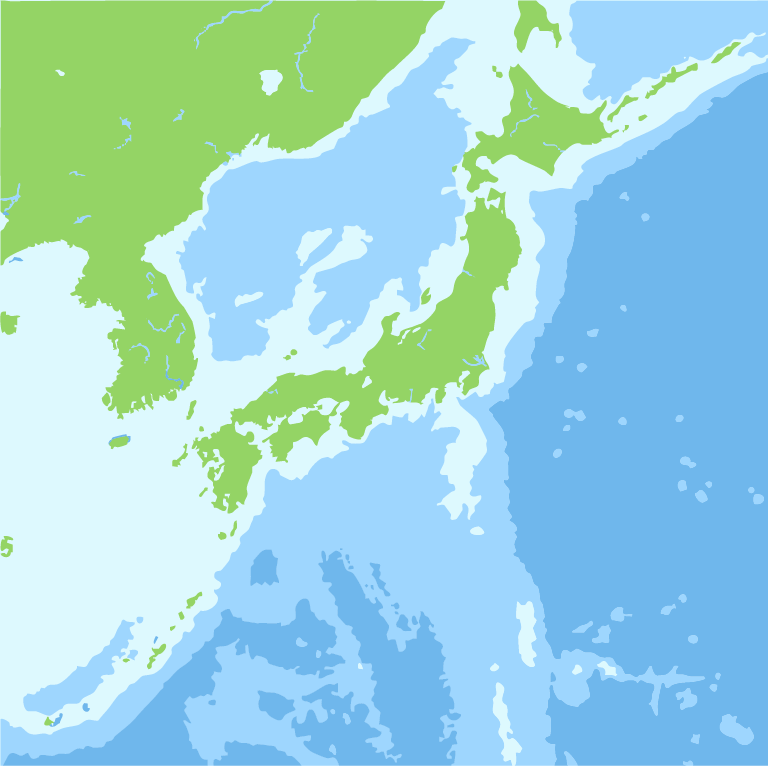
Okinawa
The trip began in earnest when the group arrived on Okinawa, where the U.S. tried to gain a foothold on the Japanese 80 years ago, in April 1945. John Hillen, who will be a distinguished resident fellow at the Center for Politics (POLIS) and an executive-in-residence in the Political Science Department, offered the first autobiographical account as the voice of President Franklin D. Roosevelt.
Hillen’s FDR provided the context for the Pacific theater of war. From there, the students carried the story into detail. “I had no idea of the slow and bloody battle that lay ahead,” said Elliot Strauch (’27) in his portrayal of commander of the Tenth Army Simon Bolivar Buckner Jr. after soldiers landed on Hagushi beach.

The beaches and the coast were central to the war, and therefore to the students. The group ferried to the small island of Iejima to visit the Niyatiya Cave, where Japanese soldiers took shelter from American naval artillery and bombing during WWII.
At the edge of the cave, Anika Dugal (’28) offered a heart wrenching portrayal of a Japanese child soldier in the Tekketsu Kinnotai, the Student Corps of Iron and Blood for the Emperor. “Before the war, I was an ordinary student in Okinawa,” Dugal said. “Then, in March 1945, everything changed. The Americans were closing in. We were told to fight to the death. We fought in caves and tunnels. By June 1945, the battle was lost. Almost half of the 1,800 students conscripted into the Tekketsu Kinnotai were dead.”
As small waves rippled behind her, Dugal stood at the edge of the cave. She concluded her presentation: “The lesson we must take from this tragedy is that the greatest failure of leadership is to sacrifice the young in wars that the old choose to fight.” Some students stepped out of the cave, took their shoes off, and stood barefoot in the East China Sea.






Hiroshima
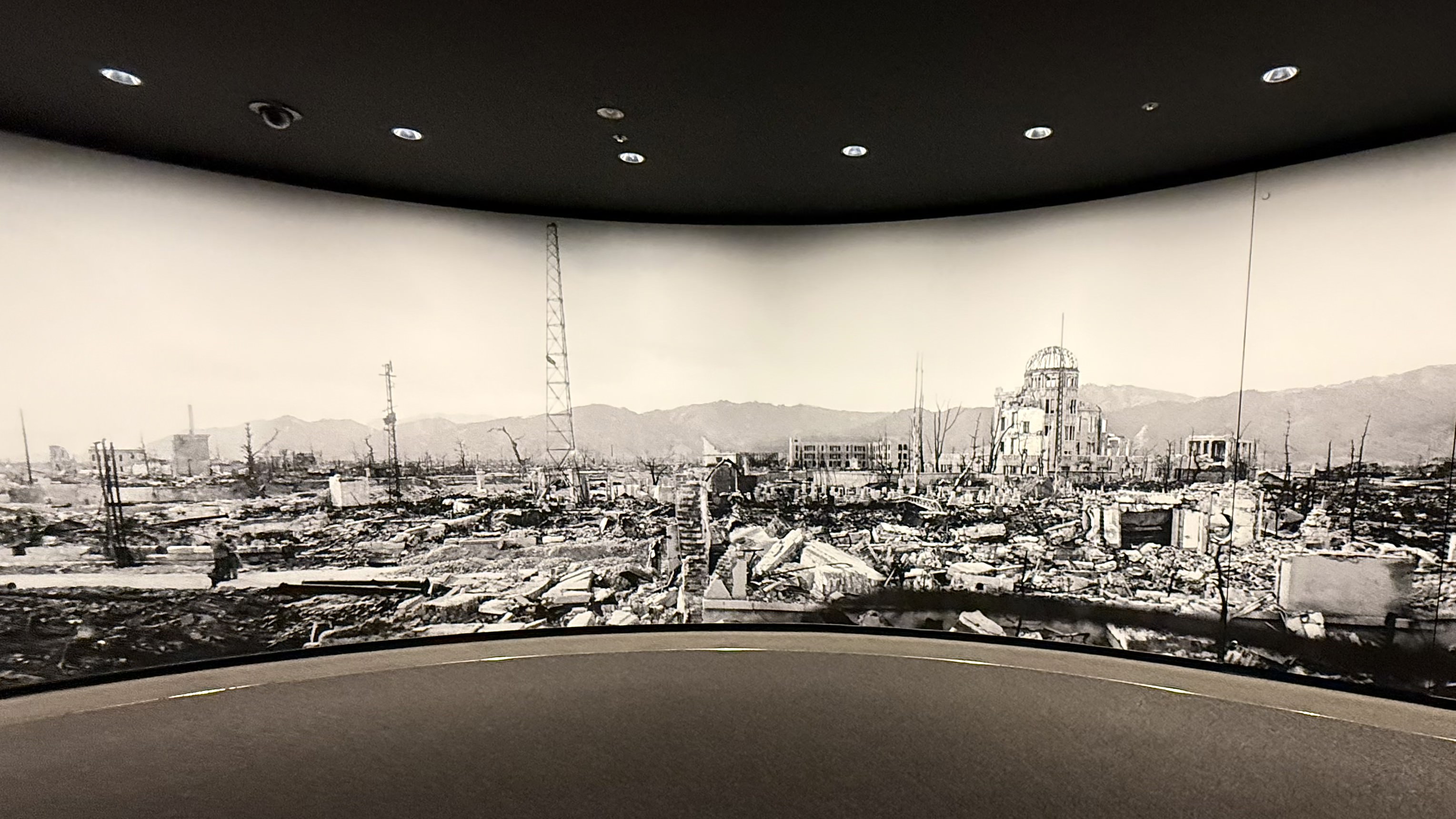

After three days on Okinawa and nearby islands, the group moved north to Hiroshima. Presentations and discussions transitioned from embroiled battlefields to the sharp details of the atomic bomb. Approximately 500 feet away from the hypocenter where the bomb detonated in Hiroshima, Lucas Wagner (’27) presented as J. Robert Oppenheimer, the physicist known for directing the development of the first nuclear weapons.
Wagner presented a complicated Oppenheimer, one who unearthed a new weapon but told President Harry Truman, “I feel I have blood on my hands.” Wagner showed Oppenheimer’s hope for an era of peace, “It is precisely because I love this country that I fathered the greatest weapon the world had yet to see. And it is precisely because I love this country that I worked to ensure it would never again be used.”

Colonel Paul Tibbets, the pilot who flew the Enola Gay and dropped the atomic bomb on Hiroshima, did not share Oppenheimer’s moral struggle. “I sleep just as peacefully as anybody can sleep,” quoted Faith Austin (’27), as she stood in front of the Hiroshima Prefectural Industrial Promotion Hall, a bombed memorial building with a shattered, skeletal dome. “I did what I was told to do, and I was damn proud of it.”
But Austin also recounted how, as Tibbets was flying back to base, some 400 miles from the mushroom cloud looming above Hiroshima, his co-pilot broke radio silence whispering, “My God, what have we done?”
"My God, what have we done?"
Millicent Caughey (‘25) portrayed the Japanese stage actress Midori Naka. Naka survived the blast but was later declared the first person to die from radiation poisoning. “You killed me,” she lamented. “To the Japanese commanders who knew this war was over and still chose to fight, to the Americans who called me a combatant, who knew the gruesome ways civilians like me were going to die. You killed me.”

In rebuilt Hiroshima, the dome shell and broken walls of the former Hiroshima Prefectural Industrial Promotion Hall remain. “Today, standing in the presence of survivors—of lives rebuilt, families reknit, a city reborn—I am reminded that humanity can also be the creator of worlds. We possess the power to build, to heal, and to reconcile, if only we choose to do so,” Wagner said.

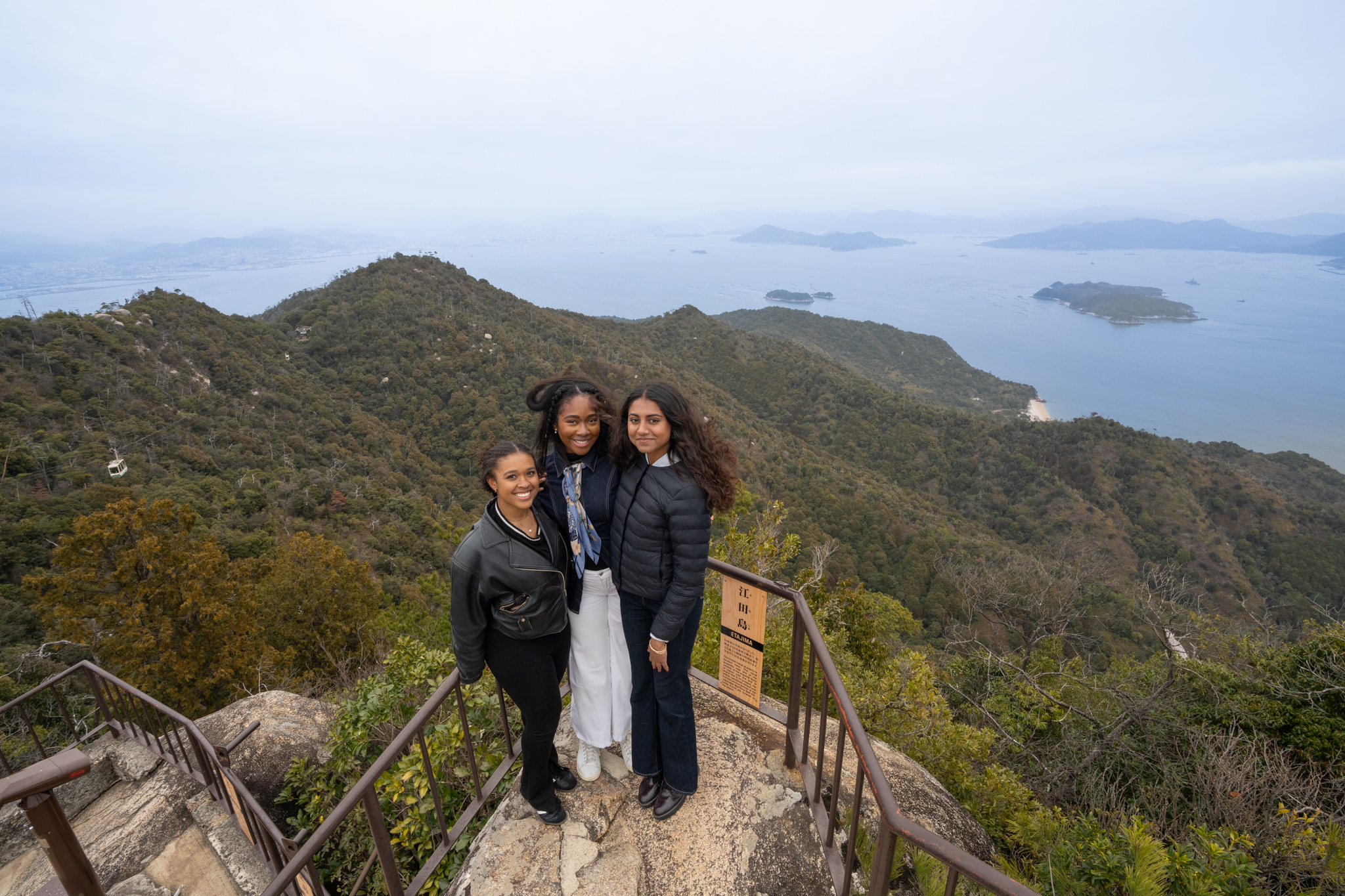
The program traveled via ferry to explore Miyajima island during free time. Jayda Bailey (‘25), Eni Owoeye (‘25), and Ananya Misra (‘27) ascended more than 1600 feet to the peak of Mount Misen and were treated to beautiful views of Hiroshima Bay.
These presentations, and a tour of detailed history and artifacts at the Hiroshima Peace Museum, bore a heavy emotional weight. Knowing students would be faced with difficult topics, faculty and student leaders planned an unstructured afternoon of exploration on the island of Miyajima so the group could ascend to the top of Mount Misen and take in the grandeur of the Seto Inland Sea.

Tokyo
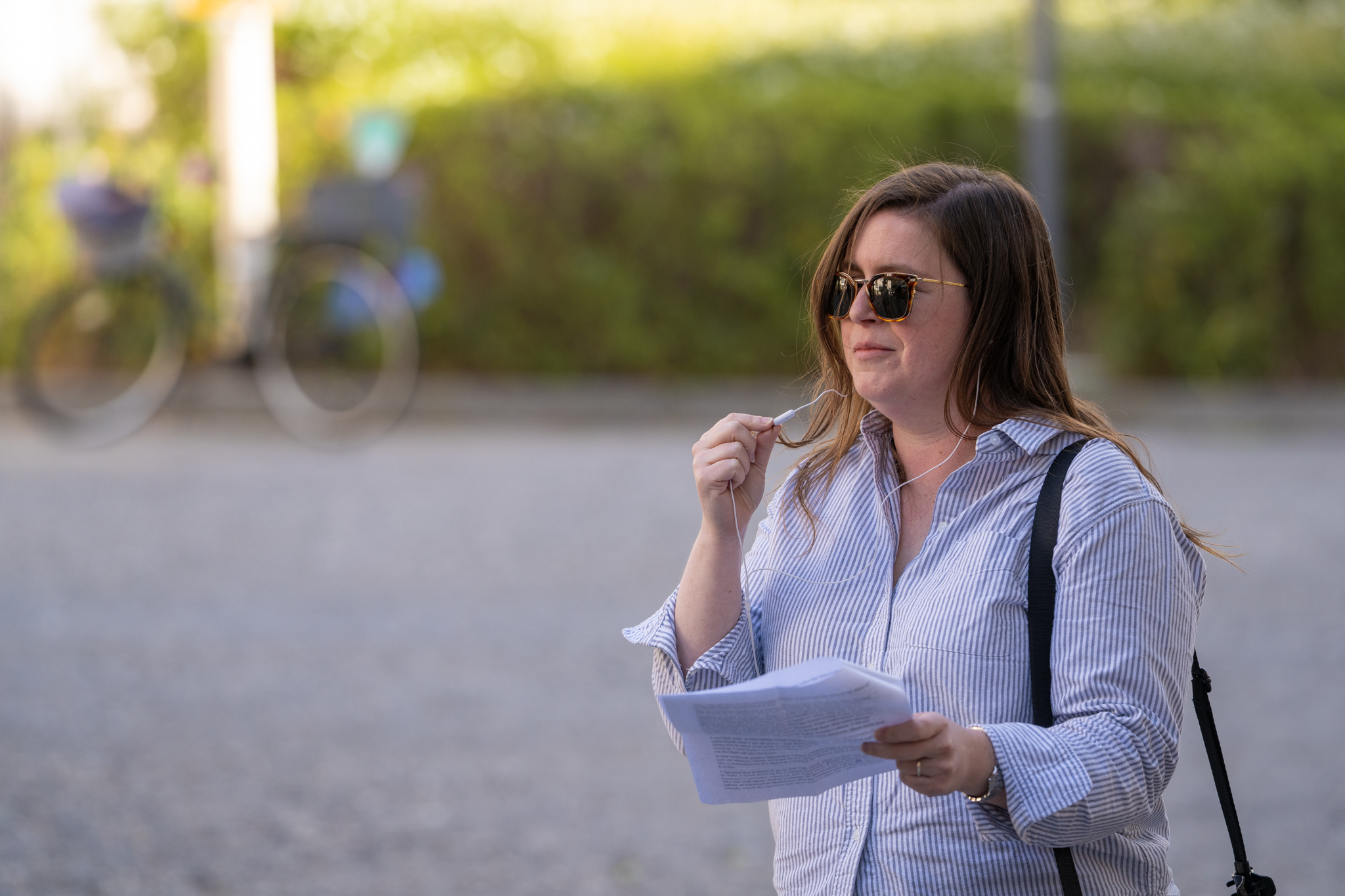
The group left Hiroshima the next day on the Nozomi high-speed train to Tokyo. Their attention raced toward the Soviet entrance into the Pacific War, and how that affected the postwar balance of power in East Asia. Susan Colbourn, associate director of the Program in American Grand Strategy, helped students understand the Soviet perspective in her presentation as Joseph Stalin.
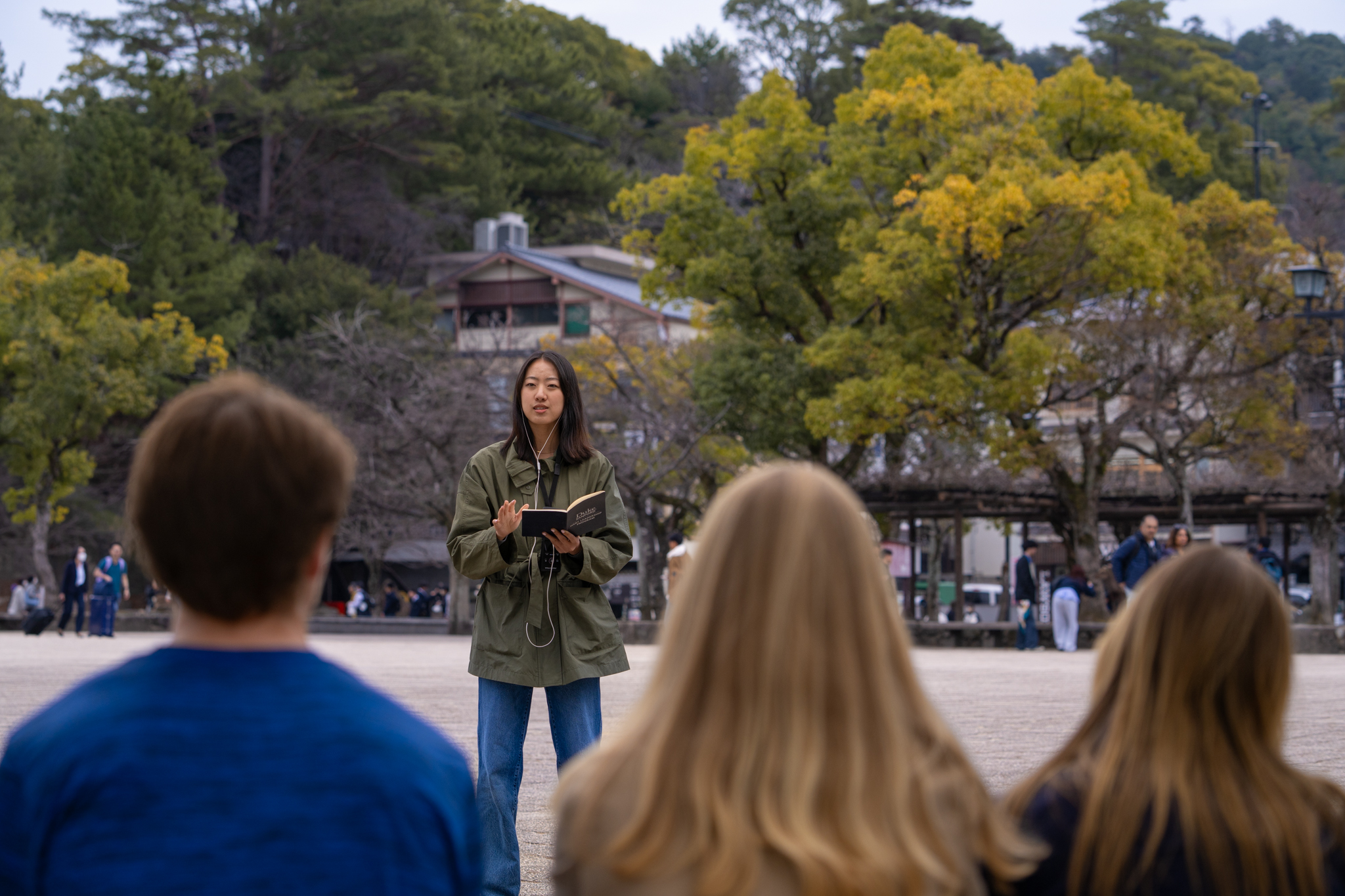
Japan became a great partner to the U.S. during the Cold War against the Soviet Union. “In the port city of Yokosuka, American and Japanese forces work and train alongside in the same offices and caves where the attack on Pearl Harbor was planned. We and Japan were once bitter enemies; now we must be the closest of friends,” said King’s Nimitz.

Then on September 2, 1945, the war ended when Fleet Admiral Chester W. Nimitz signed the instrument of Japanese surrender. “Eighty years ago this September,” Matthew King (’18) enacted as Nimitz, “I stood on the deck of the USS Missouri and signed the instrument of surrender on behalf of the United States. Anchored in Tokyo Bay were more than 300 warships from the Allied Nations, including 10 battleships — the greatest concentration of naval firepower in history.”
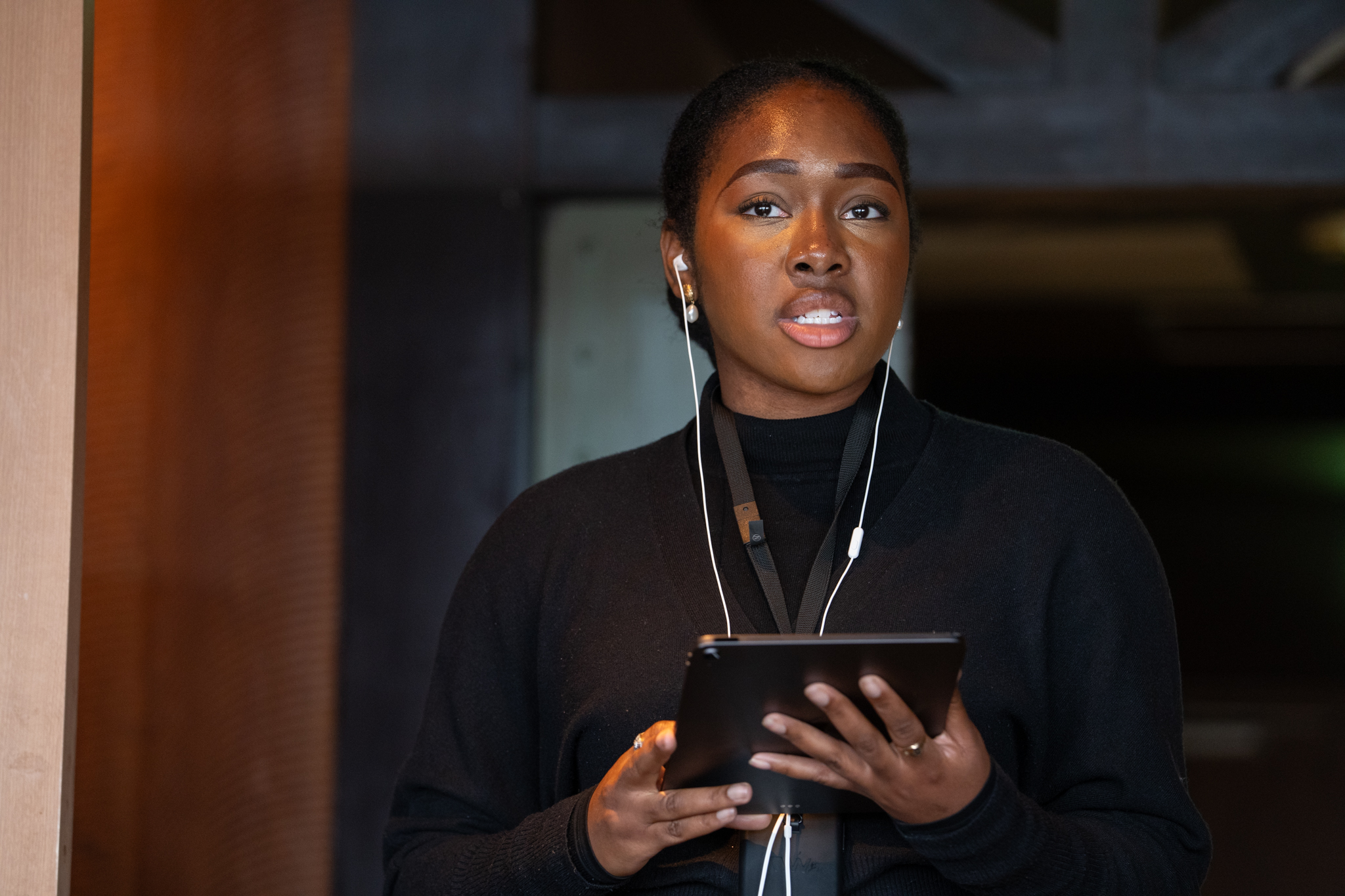
"Civilian control is essential because these bombs are not merely military instruments but political ones that affect the very fabric of our civilization," Eni Owoeye (MPP '25) said in her presentation as President Truman.
This year’s international staff ride included an opportunity for students to spend an evening connecting with Duke alumni living in Japan, hosted at the Tokyo American Club.




For students, this trip to Japan offered anchored experiences to lifelong friendships, but even more, the trip was designed to expand empathy. On that last evening at the Tokyo American Club, Eni Owoeye (’25) summarized her participation with these connections in mind, “I believe that the more we cultivate meaningful conversations, the better prepared we’ll be as global citizens.”
With support from donors, alumni and the university, Duke’s Program in American Grand Strategy has traveled on staff rides for nearly a decade, visiting Italy, Grenada, Vietnam, Morocco, Belgium and France and Hawaii. These opportunities take learning outside the classroom and give students an exceptional opportunity to understand strategy and major episodes in U.S. history, all while connecting with a growing network of alumni.
Learn more about past staff rides.
To learn more about the program, visit ags.duke.edu.
